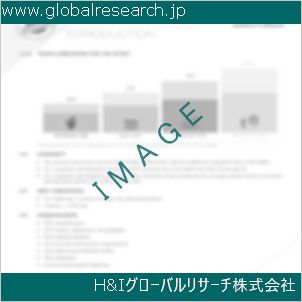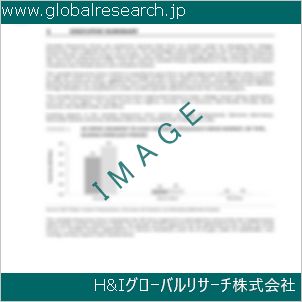Table of Contents
1 Industry Overview of Epichlorohydrin
1.1 Definition and Specifications of Epichlorohydrin
1.1.1 Definition of Epichlorohydrin
1.1.2 Specifications of Epichlorohydrin
1.2 Classification of Epichlorohydrin
1.3 Applications of Epichlorohydrin
1.3.1 Nuclear Application
1.3.2 Non-Nuclear Application
1.4 Industry Chain Structure of Epichlorohydrin
1.5 Industry Overview and Major Regions Status of Epichlorohydrin
1.5.1 Industry Overview of Epichlorohydrin
1.5.2 Global Major Regions Status of Epichlorohydrin
1.6 Industry Policy Analysis of Epichlorohydrin
1.7 Industry News Analysis of Epichlorohydrin
2 Manufacturing Cost Structure Analysis of Epichlorohydrin
2.1 Raw Material Suppliers and Price Analysis of Epichlorohydrin
2.2 Equipment Suppliers and Price Analysis of Epichlorohydrin
2.3 Labor Cost Analysis of Epichlorohydrin
2.4 Other Costs Analysis of Epichlorohydrin
2.5 Manufacturing Cost Structure Analysis of Epichlorohydrin
2.6 Manufacturing Process Analysis of Epichlorohydrin
3 Technical Data and Manufacturing Plants Analysis of Epichlorohydrin
3.1 Capacity and Commercial Production Date of Global Epichlorohydrin Major Manufacturers in 2023
3.2 Manufacturing Plants Distribution of Global Epichlorohydrin Major Manufacturers in 2023
3.3 R&D Status and Technology Source of Global Epichlorohydrin Major Manufacturers in 2023
3.4 Raw Materials Sources Analysis of Global Epichlorohydrin Major Manufacturers in 2023
4 Capacity, Production and Revenue Analysis of Epichlorohydrin by Regions, Types and Manufacturers
4.1 Global Capacity, Production and Revenue of Epichlorohydrin by Regions 2019-2024
4.2 Global and Major Regions Capacity, Production, Revenue and Growth Rate of Epichlorohydrin 2019-2024
4.3 Global Capacity, Production and Revenue of Epichlorohydrin by Types 2019-2024
4.4 Global Capacity, Production and Revenue of Epichlorohydrin by Manufacturers 2019-2024
5 Price, Cost, Gross and Gross Margin Analysis of Epichlorohydrin by Regions, Types and Manufacturers
5.1 Price, Cost, Gross and Gross Margin Analysis of Epichlorohydrin by Regions 2019-2024
5.2 Price, Cost, Gross and Gross Margin Analysis of Epichlorohydrin by Types 2019-2024
5.3 Price, Cost, Gross and Gross Margin Analysis of Epichlorohydrin by Manufacturers 2019-2024
6 Consumption Volume, Consumption Value and Sale Price Analysis of Epichlorohydrin by Regions, Types and Applications
6.1 Global Consumption Volume and Consumption Value of Epichlorohydrin by Regions 2019-2024
6.2 Global and Major Regions Consumption Volume, Consumption Value and Growth Rate of Epichlorohydrin 2019-2024
6.3 Global Consumption Volume and Consumption Value of Epichlorohydrin by Types 2019-2024
6.4 Global Consumption Volume and Consumption Value of Epichlorohydrin by Applications 2019-2024
6.5 Sale Price of Epichlorohydrin by Regions 2019-2024
6.6 Sale Price of Epichlorohydrin by Types 2019-2024
6.7 Sale Price of Epichlorohydrin by Applications 2019-2024
6.8 Market Share Analysis of Epichlorohydrin by Different Sale Price Levels
7 Supply, Import, Export and Consumption Analysis of Epichlorohydrin
7.1 Supply, Consumption and Gap of Epichlorohydrin 2019-2024
7.2 Global Capacity, Production, Price, Cost, Revenue, Supply, Import, Export and Consumption of Epichlorohydrin 2019-2024
7.3 USA Capacity, Production, Price, Cost, Revenue, Supply, Import, Export and Consumption of Epichlorohydrin 2019-2024
7.4 EU Capacity, Production, Price, Cost, Revenue, Supply, Import, Export and Consumption of Epichlorohydrin 2019-2024
7.5 China Capacity, Production, Price, Cost, Revenue, Supply, Import, Export and Consumption of Epichlorohydrin 2019-2024
7.6 Japan Capacity, Production, Price, Cost, Revenue, Supply, Import, Export and Consumption of Epichlorohydrin 2019-2024
8 Major Manufacturers Analysis of Epichlorohydrin
8.1 Manufacturer One
8.1.1 Company Profile
8.1.2 Product Picture and Specifications
8.1.2.1 Type I
8.1.2.2 Type II
8.1.2.3 Type III
8.1.3 Capacity, Production, Price, Cost, Gross and Revenue
8.1.4 Contact Information
8.2 Manufacturer Two
8.2.1 Company Profile
8.2.2 Product Picture and Specifications
8.2.2.1 Type I
8.2.2.2 Type II
8.2.2.3 Type III
8.2.3 Capacity, Production, Price, Cost, Gross and Revenue
8.2.4 Contact Information
8.3 Manufacturer Three
8.3.1 Company Profile
8.3.2 Product Picture and Specifications
8.3.2.1 Type I
8.3.2.2 Type II
8.3.2.3 Type III
8.3.3 Capacity, Production, Price, Cost, Gross and Revenue
8.3.4 Contact Information
8.4 Manufacturer Four
8.4.1 Company Profile
8.4.2 Product Picture and Specifications
8.4.2.1 Type I
8.4.2.2 Type II
8.4.2.3 Type III
8.4.3 Capacity, Production, Price, Cost, Gross and Revenue
8.4.4 Contact Information
8.5 Manufacturer Five
8.5.1 Company Profile
8.5.2 Product Picture and Specifications
8.5.2.1 Type I
8.5.2.2 Type II
8.5.2.3 Type III
8.5.3 Capacity, Production, Price, Cost, Gross and Revenue
8.5.4 Contact Information
…
9 Marketing Trader or Distributor Analysis of Epichlorohydrin
9.1 Marketing Channels Status of Epichlorohydrin
9.2 Traders or Distributors with Contact Information of Epichlorohydrin by Regions
9.3 Ex-work Price, Channel Price and End Buyer Price Analysis of Epichlorohydrin
9.4 Regional Import, Export and Trade Analysis of Epichlorohydrin
10 Industry Chain Analysis of Epichlorohydrin
10.1 Upstream Major Raw Materials Suppliers Analysis of Epichlorohydrin
10.1.1 Major Raw Materials Suppliers with Contact Information Analysis of Epichlorohydrin
10.1.2 Major Raw Materials Suppliers with Supply Volume Analysis of Epichlorohydrin by Regions
10.2 Upstream Major Equipment Suppliers Analysis of Epichlorohydrin
10.2.1 Major Equipment Suppliers with Contact Information Analysis of Epichlorohydrin
10.2.2 Major Equipment Suppliers with Product Pictures Analysis of Epichlorohydrin by Regions
10.3 Downstream Major Consumers Analysis of Epichlorohydrin
10.3.1 Major Consumers with Contact Information Analysis of Epichlorohydrin
10.3.2 Major Consumers with Consumption Volume Analysis of Epichlorohydrin by Regions
10.4 Supply Chain Relationship Analysis of Epichlorohydrin
11 Development Trend of Analysis of Epichlorohydrin
11.1 Capacity, Production and Revenue Forecast of Epichlorohydrin by Regions and Types
11.1.1 Global Capacity, Production and Revenue of Epichlorohydrin by Regions 2024-2029
11.1.2 Global and Major Regions Capacity, Production, Revenue and Growth Rate of Epichlorohydrin 2024-2029
11.1.3 Global Capacity, Production and Revenue of Epichlorohydrin by Types 2024-2029
11.2 Consumption Volume and Consumption Value Forecast of Epichlorohydrin by Regions, Types and Applications
11.2.1 Global Consumption Volume and Consumption Value of Epichlorohydrin by Regions 2024-2029
11.2.2 Global and Major Regions Consumption Volume, Consumption Value and Growth Rate of Epichlorohydrin 2024-2029
11.2.3 Global Consumption Volume and Consumption Value of Epichlorohydrin by Types 2024-2029
11.2.4 Global Consumption Volume and Consumption Value of Epichlorohydrin by Applications 2024-2029
11.3 Supply, Import, Export and Consumption Forecast of Epichlorohydrin
11.3.1 Supply, Consumption and Gap of Epichlorohydrin 2024-2029
11.3.2 Global Capacity, Production, Price, Cost, Revenue, Supply, Import, Export and Consumption of Epichlorohydrin 2024-2029
11.3.3 USA Capacity, Production, Price, Cost, Revenue, Supply, Import, Export and Consumption of Epichlorohydrin 2024-2029
11.3.4 EU Capacity, Production, Price, Cost, Revenue, Supply, Import, Export and Consumption of Epichlorohydrin 2024-2029
11.3.5 China Capacity, Production, Price, Cost, Revenue, Supply, Import, Export and Consumption of Epichlorohydrin 2024-2029
11.3.6 Japan Capacity, Production, Price, Cost, Revenue, Supply, Import, Export and Consumption of Epichlorohydrin 2024-2029
12 New Project Investment Feasibility Analysis of Epichlorohydrin
12.1 New Project SWOT Analysis of Epichlorohydrin
12.2 New Project Investment Feasibility Analysis of Epichlorohydrin
13 Conclusion of the Global Epichlorohydrin (CAS 106-89-8) Industry 2024 Market Research Report
| ※参考情報 エピクロロヒドリン(Epichlorohydrin、CAS番号:106-89-8)は、有機化合物の一つであり、特に工業化学において重要な役割を果たしています。エピクロロヒドリンは、化学式C3H5ClOで表され、無色の液体として存在します。この化合物は、さまざまな化学反応に利用されるため、その性質や用途について詳しく理解しておくことは重要です。 エピクロロヒドリンの特徴として、まず、その化学的性質が挙げられます。エピクロロヒドリンは非常に反応性が高く、さまざまな官能基と反応することで多くの誘導体を生成することができます。この反応性は、エポキシ化合物であることに起因しており、エポキシグループの存在が、他の化合物との反応を促進させます。また、エピクロロヒドリンは、極性が高いため、極性溶媒と良好に混ざる特性を持っています。 一般的に、エピクロロヒドリンは主に塩素化物とグリセリンから合成されます。この過程は、通常の化学合成法の一つとして広く用いられており、安価で効率的な生産が可能です。この化合物は、商業的にはエポキシ樹脂や合成繊維の製造に利用されています。エポキシ樹脂は、その優れた粘着性と耐薬品性を持ち、電子機器、自動車、建材など多岐にわたる分野で使用されています。 用途に関して、エピクロロヒドリンは多機能の中間体として機能します。たとえば、エピクロロヒドリンはポリウレタンやポリビニルアルコールの製造過程において中間体として使用されます。ポリウレタンは、その柔軟性や強度から、家具や自動車のシート、塗料、断熱材などに用いられます。一方で、ポリビニルアルコールは接着剤やフィルム材、さらには医療用材料としても利用されており、その市場は年々拡大しています。 さらに、エピクロロヒドリンはバイオテクノロジー分野でも注目されています。具体的には、医療や農業において、エピクロロヒドリンを使用して合成したポリマーを利用することで、特定の生物活性物質を安定的に運ぶことが可能になります。これにより、薬剤の効果が向上し、副作用が軽減されることが期待されています。例えば、医薬品の製造においては、ターゲティング型ドラッグデリバリーシステムが開発されており、これにエピクロロヒドリン由来の材料が応用されるケースが増加しています。 一方で、エピクロロヒドリンにはいくつかの健康リスクと環境への影響があることも無視できません。エピクロロヒドリンは、皮膚や呼吸器系に刺激を引き起こす可能性があり、さらには発がん性の懸念も抱えています。そのため、取り扱いには十分な注意が必要です。多くの国では、エピクロロヒドリンの使用に関して厳しい規制が設けられており、安全基準を遵守することが強く求められています。 環境への影響についても、注意が必要です。エピクロロヒドリンは水溶性があり、下水や土壌中に流出すると、周囲の生態系に悪影響を与える可能性があります。したがって、製造過程や使用後の適切な管理が求められます。これに加え、より環境に配慮した代替材料の開発が進められており、エピクロロヒドリンの使用が減少する可能性も考えられます。 このように、エピクロロヒドリンは、その高い反応性や用途の広さから、現代の化学産業において重要な役割を担っています。一方で、健康や環境に対するリスクも伴うため、取り扱いや使用の際には注意が求められます。今後の技術の進展により、より安全で効率的な製造方法や新たな用途の開発が期待されます。エピクロロヒドリンは今後の化学産業において、さらなる発展の可能性を秘めた化合物であると言えるでしょう。 |
❖ 免責事項 ❖
http://www.globalresearch.jp/disclaimer












